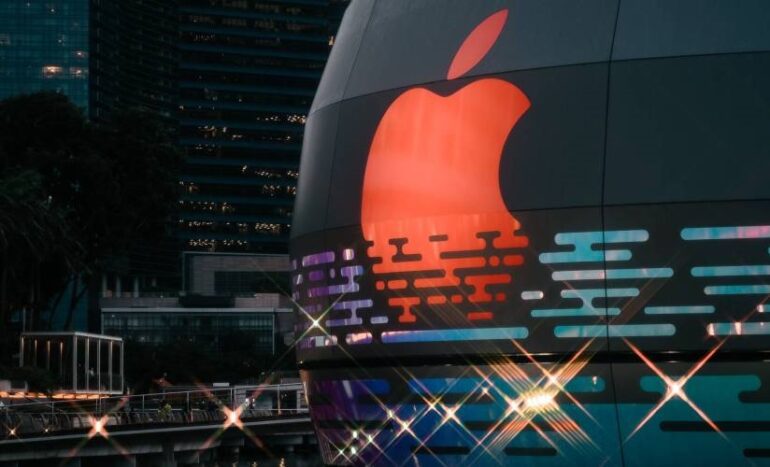TL;DR:
- Apple has open-sourced its MLX machine learning framework under an MIT license.
- MLX supports transformer model language training, image and text creation with Stable Diffusion and Mistral, and speech recognition via Whisper.
- MLX leverages unified memory in M1 and M2 chips for faster and more efficient operations.
- The framework offers ‘lazy computation’ for improved performance.
- MLX is written in C++ and Python, easing the transition for data scientists.
- Apple’s hardware, though not cheap, competes with high-end desktop hardware.
- Apple’s decision to open source MLX aims to promote its hardware rather than purely contribute to open source.
- In the long run, open-source methods and frameworks are expected to outperform proprietary engines in machine learning.
Main AI News:
In the ever-evolving landscape of technology, Apple has consistently distinguished itself by delivering cutting-edge hardware that excels in performance while maintaining energy efficiency. The adoption of ARM-based chips over traditional x86 counterparts has been a pivotal factor in customers favoring Cupertino’s products. Apple’s laptops, powered by batteries capable of a full day’s work, are complemented by applications fine-tuned to leverage the capabilities of their silicon, often outperforming beefy workstations.
Now, Apple extends its commitment to innovation in the field of machine learning by releasing its MLX machine learning framework under an open-source MIT license. This strategic move promises to bring the advantages of Apple’s silicon to the computational-intensive realm of machine learning. The MLX framework boasts support for various applications, including transformer model language training, image and text creation using Stable Diffusion and Mistral, and speech recognition with the versatile and extensible Whisper.
One of the most compelling features of this shift is MLX’s compatibility with the unified memory system present in M1 and M2 generation chips. This breakthrough enables seamless data operations without the need to transfer data between CPU and GPU memory. While this may seem like a matter of milliseconds, the iterative nature of machine learning computations means that these milliseconds accumulate, resulting in significant performance gains. For instance, Stable Diffusion can deliver up to a 40% increase in speed compared to PyTorch.
However, PyTorch maintains its advantage for smaller batch sizes, primarily due to quicker compilation speeds when the model is not held in memory. MLX introduces ‘lazy computation,’ where data is materialized only when necessary, avoiding slow compilation processes associated with graph arguments.
MLX, crafted in C++ and Python, provides API calls familiar to users of NumPy and PyTorch, ensuring a smooth transition for data scientists looking to harness the potential of Apple silicon with minimal adjustments.
Apple Silicon: A Game-Changer for Data Professionals
Developing effective machine learning models is a resource-intensive endeavor. Hence, any acceleration in the model development process is an enticing proposition. While Apple’s silicon-based hardware may not come cheap in consumer terms, it can compete with high-end desktop hardware commonly found on the desks of developers and data professionals.
Apple’s history in open source has been mixed, with proprietary macOS and WebKit having roots in BSD and KHTML, respectively. However, Apple’s decision to release MLX as open source is more about promoting its hardware than simply contributing to the open-source community. It aims to empower data scientists by putting a powerful machine learning framework in their hands, one that thrives on Apple’s hardware.
The Path to Machine Learning Supremacy
In the realm of machine learning, the most significant breakthroughs and rapid advancements emerge from the extensive use and iterative improvements of open-source code. Proprietary engines struggle to outperform the collective intelligence and collaborative efforts inherent in open-source methods and frameworks over the medium to long term.
Apple’s earlier exit from server hardware in the early 2010s may be viewed as a missed opportunity. Data centers running ARM or RISC V chips have demonstrated comparable or superior performance to x86, with lower power and cooling requirements. Apple’s potential dominance in the server market, had it persisted, could have reshaped the industry. Nevertheless, Apple’s decision to open source MLX reaffirms its commitment to innovation and sets the stage for further advancements in machine learning.
Conclusion:
Apple’s move to open-source its MLX framework signifies a strategic step towards leveraging its hardware for machine learning applications. This decision is likely to attract data professionals, speed up model development and potentially reshape the machine learning landscape. However, the market should expect more competition and innovation in the open-source machine learning space, with collective intelligence driving future advancements.

